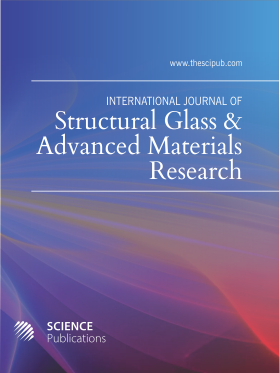Effect of Niobium Oxide Incorporation on Optical Properties of Sodium Bismuth Borate Glasses
- 1 High Institute of Optics Technology, Egypt
- 2 Damanhour University, Egypt
- 3 El-Fayoum University, Egypt
Abstract
Glasses with the chemical compositions 60% B2O3-20% Na2O-(20-x) % Bi2O3-x% Nb2O5 (where, x = 0, 5, 10 and 15 mol. %), were prepared by fast quenching of their melts. Characteristics of the obtained solids were checked by XRD, FTIR and optical absorption spectroscopy. XRD data confirmed the amorphous nature of the glass samples. FTIR results revealed no changes in the ratio of the structural units BO3:BO4 when replacing Bi2O3 by Nb2O5. Moreover, both Bi3+ and Nb5+ cations occupied octahedral coordination states and both acted as glass network modifiers. Optical studies affirmed that the lowest value of both direct and indirect optical band gaps was obtained in samples with equal concentration of Nb2O5 and Bi2O3. All optical absorption bands were elucidated in terms of the terminal oxygen atoms around Nb5+ and/or Bi3+ cations. The optical nonlinearity of the glass samples was assessed in terms of absorption coefficient and the value of the optical band gap.
DOI: https://doi.org/10.3844/sgamrsp.2019.79.86

- 5,672 Views
- 3,530 Downloads
- 9 Citations
Download
Keywords
- Sodium Bismuth Niobium Borate Glass
- Absorption Coefficient
- Direct and Indirect Optical Band Gaps
- Optical Nonlinearity
